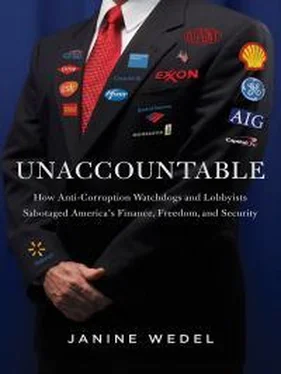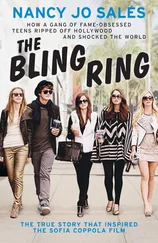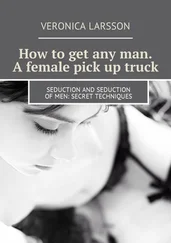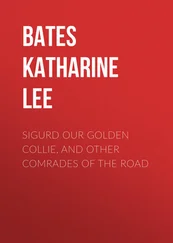The High-Priest economists were armed with the answers—liberalization and privatization—and renegades were swiftly sidelined. Economists and the then–Big Six accounting firms had been designated the prime arbiters of change, charged as they were with the once-in-a-lifetime mission of turning the formerly communist Soviet and Eastern Bloc region into capitalist states as the Cold War was winding down. 28That was the very region where signature anti-corruption programs were launched just a few years later.
Thus economists also became the High Priests of anti-corruption, not simply of economics, finance, and business. By the mid-1990s, corruption overseas was making headlines and entering public consciousness in the United States and much of the West. 29Wide swaths of the globe, including many barely governed spaces cut from the ruins of the Cold War, were now the playgrounds of “mafias” or elites, both homegrown and not, bent on extracting resources. With the U.S.-versus-the-U.S.S.R. meme now relegated to the history books, we looked for other ways to understand the “new world.” For many in the West, certain place names were brand-new—from the “stans” like Kazakhstan, to Georgia and Azerbaijan, to Croatia, Bosnia, Serbia, and other states of the former Yugoslavia. Corruption helped fill the void of understanding left by the bygone battle of the two superpowers. A 1997 editorial in the Wall Street Journal Europe touting the work of TI spoke of “the global corruption hydra” as an especially “frustrating” target, “as enemies go.” 30Corruption helped frame our narrative of the new world, popping up in casual and cocktail conversation. It was a theme on which a winning doctoral thesis could be written and one that could launch a lucrative career as a consultant. And big business could wrap itself in the moral mantle of anti-corruption while, at the same time, easing entrée into new markets.
It was in this context that the anti-corruption industry led by the high-priest economists gathered such force.
INSTITUTIONAL ACCESSORIES
A brief detour to the geopolitics of the Cold War is required to make sense of how corruption (and anti-corruption) came to the fore. During that era, the West needed—and bought, through foreign aid—the loyalties of Third World dictators. These included such figures as Mobutu Sese Seko in what was then called Zaire, Ferdinand Marcos in the Philippines, Haile Selassie in Ethiopia, and Mohammed Zia Ul-Haq in Pakistan. Such tyrants often sported Swiss bank accounts (where they stashed some of their countries’ aid-supplied GDP), chateaus on the French Riviera, and their own private jets to get there.
Meanwhile, in the ivory towers of the First World, scholars, notably economists and political scientists, were trying to make sense of the Third World. 31Of course, the First World and the Second (the Soviet Union and its satellites) were already demarcated. Then there was the Third World, a notion that crystallized with the Cold War. 32Economists, steeped in that notion (along with most everyone else), helped define the field of international economic development, while political scientists theorized about modernization (in short, an evolutionary view of a state’s transition from “traditional” to “modern” society). Problems of corruption would figure in both disciplines. 33At the time, scholars from both fields generally shared the view that corrupt behavior, as the Harvard political scientist Joseph S. Nye put it, “is likely to be more prominent in less developed countries because of a variety of conditions involved in their underdevelopment.” 34And twenty years later, economist Robert Klitgaard would similarly assess that “corruption is one of the foremost problems in the developing world.” 35
But is corruption good, or bad? That was the subject of debate. Some analysts postulated that corruption actually facilitated economic development. 36Nye employed cost-benefit analysis to sort out whether corruption is beneficial or harmful. 37He concluded that, with certain exceptions, “The costs of corruption . . . will exceed its benefits.” 38
Still, that cost would be way down the road and, meanwhile, the struggle for world domination between the two superpowers took center stage.
The Cold War came to a close. And, with it, so did the blanket tolerance for bald-faced corruption. Large-scale ripoff of aid, now more visible, became harder for Western taxpayers to swallow. 39Dictators whom the West had valued for their anticommunist backing became less useful. “When their rule ended, they were then presented to the public as greedy, evil kleptocrats,” as one observer put it. “These ‘revelations’ converged to feed the anticorruption cause.” 40Now the West could wash its hands of such leaders without risking the loss of essential allies. It could confront corruption.
In this climate, two organizations, both dominated by economists, breathed life into the anti-corruption cause: Transparency International, of CPI fame, based in Berlin; and the World Bank, the foremost global development agency, headquartered in Washington, D.C. With the largest presence in these institutions, economists poised themselves to draw attention to the issue of corruption, define the approach to it, and sponsor anti-corruption efforts worldwide.
If the anti-corruption effort was like “combat,” the World Bank would supply the heavy artillery (read: resources), reconnaissance officials (read: diagnostic studies), and the boots on the ground (read: anti-corruption initiatives and training). The Bank’s head would be the commander-in-chief. In 1996, Bank president James Wolfensohn issued the call to arms to “fight” corruption. 41In a speech that has been routinely characterized as “seminal” and “landmark,” he decried the “cancer of corruption” at the World Bank–International Monetary Fund annual meeting. That talk is even credited with mobilizing an international anti-corruption agenda.
With the Bank providing direction and resources, not only for action but also for research, economists were the best positioned to build a new body of corruption scholarship and to propel their discipline’s frameworks into the corruption fight. 42Both the most influential corruption scholars and the intellectual godfathers of anti-corruption were economists, and many of them were associated with the Bank. 43Bank-sponsored economists were prime movers in shaping how corruption was conceptualized and studied, honing the theory to support it, and prescribing solutions.
A close partner in this mobilization was TI. Peter Eigen, a German economist who had co-founded TI in 1993, was a former World Bank official. Other TI movers and shakers had also made careers at the Bank. 44Eigen and his co-creators were concerned about the corruption they had witnessed in Third World capitals. An equal, if not greater, concern was that American multinational companies were unfairly disadvantaged abroad by the 1977 U.S. Foreign Corrupt Practices Act, as some commentators contended, given that their competitors were not subject to prohibitions against bribing foreign officials embodied in the law. 45In 1997, Eigen pronounced: “A large share of the corruption [in developing countries] is the explicit product of multinational corporations, headquartered in leading industrialised countries, using massive bribery and kick-backs to buy contracts in the developing world and the countries in transition.” As I noted earlier, TI was (and continues to be) substantially supported by big business. 46When confronting corruption turned into a public-policy imperative, TI’s mission and targets evolved. All the while, it pursued a “full and productive partnership” with the Bank, in the words of TI’s 1999 annual report. 47
With the help of “a globalised elite discourse,” as anthropologist Sampson describes it, anti-corruption efforts became institutionalized, as movements typically do if they last. And so it came to pass that a standardized “series of policies, regulations, initiatives, conventions, training courses, monitoring activities, and programs to enhance integrity and improve public administration” spread throughout the globe. This “elite discourse” is critical to the continued success of the industry. 48
Читать дальше












